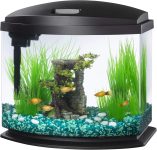
Black Friday Aqueon LED MiniBow Small Aquarium Fish Aquarium Kit Review – Oemiu
Black Friday Aqueon LED MiniBow Small Aquarium Fish Aquarium Kit Review
The allure of owning an aquarium, even a small one, is undeniable. It’s a miniature ecosystem right in your home, a calming focal point that can transform a room. For beginners and those with limited space, the Aqueon LED MiniBow Aquarium Kit has become a popular choice. But is it worth the hype, especially when Black Friday deals roll around? This comprehensive review dives deep into every aspect of this small aquarium kit, helping you decide if it’s the right fit for your aquatic dreams.
Unboxing the Aqueon LED MiniBow: First Impressions and Key Components
Opening the Aqueon LED MiniBow Aquarium Kit is a straightforward experience. The kit typically includes a small, clear plastic tank (usually 2.5 or 5 gallons), a low-profile LED hood with energy-efficient lighting, a filter (often an Aqueon QuietFlow filter), filter cartridge, heater and fish food sample, and sometimes a setup guide. The initial impression is one of simplicity and completeness. Everything you need to get started, at least on a basic level, is included in the box. The plastic tank feels sturdy enough for its size, and the LED hood is a significant improvement over the fluorescent lighting often found in older small aquarium kits. The filter is compact and designed to be relatively quiet, a crucial factor for those placing the aquarium in a bedroom or office.
The setup guide is usually clear and concise, making the initial setup process relatively painless, even for complete novices. However, it’s important to remember that setting up an aquarium properly takes time and patience. Rushing the process can lead to problems later on, such as algae blooms or unhealthy water conditions. A crucial component not always emphasized enough in these guides is the importance of cycling the tank. Cycling refers to establishing a beneficial bacteria colony that breaks down harmful waste products (ammonia and nitrites) produced by fish. This process can take several weeks, and adding fish before the tank is fully cycled can be fatal. More on cycling will be discussed later.
Considering the target audience, the Aqueon LED MiniBow Aquarium Kit strikes a good balance between affordability and functionality. While the components are not necessarily top-of-the-line, they are adequate for keeping a small number of appropriate fish healthy and happy. For example, the included filter cartridge provides both mechanical and chemical filtration, removing debris and absorbing harmful chemicals from the water. The LED lighting, although basic, provides enough light for viewing the fish and supporting low-light aquatic plants. A major selling point is certainly the simplicity of this small aquarium kit.
A Closer Look at the Filter System: Aqueon QuietFlow Filtration
The heart of any healthy aquarium is its filtration system. The Aqueon LED MiniBow Aquarium Kit typically includes an Aqueon QuietFlow filter, specifically designed for small aquariums. This filter utilizes a multi-stage filtration process to keep the water clean and clear. The first stage, mechanical filtration, involves a filter cartridge that traps particulate matter like uneaten food and fish waste. This prevents the water from becoming cloudy and helps to maintain water clarity. The second stage, chemical filtration, involves activated carbon within the filter cartridge. Activated carbon absorbs harmful chemicals like chlorine, chloramine, and heavy metals from the water. It also helps to remove odors and discoloration. Some cartridges also include a bio-holster that provides surface area for beneficial bacteria growth, which is vital for the nitrogen cycle.
The QuietFlow filter is designed to be relatively quiet, as the name suggests. However, it’s important to note that all filters produce some noise. The level of noise can vary depending on the specific model, the placement of the filter, and the water level in the tank. To minimize noise, ensure the filter is properly installed and that the water level is maintained at the recommended level. Regularly cleaning the filter and replacing the filter cartridge are also essential for maintaining optimal performance and reducing noise.
While the QuietFlow filter is a decent option for small aquariums, it’s not without its limitations. The filter cartridges need to be replaced regularly, typically every 2-4 weeks, which can add to the long-term cost of aquarium ownership. Some aquarists prefer to use reusable filter media, such as sponges or ceramic rings, which can be more cost-effective in the long run. Additionally, the QuietFlow filter may not be powerful enough for heavily stocked tanks or tanks with messy fish. In these cases, upgrading to a more powerful filter may be necessary.
Overall, the Aqueon QuietFlow filter is a decent, basic filter for the Aqueon LED MiniBow Aquarium Kit. It provides adequate filtration for a small number of small fish, but it’s important to be aware of its limitations and to maintain it properly to ensure optimal performance. Consider it a decent entry-level filtration system for a starter Aquarium Kit.
Lighting the Way: Evaluating the LED Hood
The LED hood included with the Aqueon LED MiniBow Aquarium Kit is a significant upgrade from the fluorescent lighting often found in older small aquarium kits. LED lighting offers several advantages, including lower energy consumption, longer lifespan, and less heat production. The LED hood provides adequate lighting for viewing the fish and supporting low-light aquatic plants, such as Java fern or Anubias. However, it’s important to note that the LED lighting is not designed for high-light plants, which require more intense light to thrive.
The LED hood is typically a low-profile design, which helps to maintain a sleek and modern look. It also helps to prevent water from splashing out of the tank. However, the hood may not be completely sealed, which can lead to some evaporation. To minimize evaporation, ensure the hood is properly seated on the tank and consider using a glass lid. The color temperature of the LED lighting is usually around 6500K, which is a good balance between warm and cool light. This color temperature helps to enhance the natural colors of the fish and plants.
While the LED lighting is a definite plus, it’s not without its drawbacks. The intensity of the lighting may not be adjustable, which can be a problem if you want to grow more demanding plants. Additionally, the LED lighting may not be replaceable, which means that if the LEDs burn out, you may need to replace the entire hood. However, LEDs typically have a very long lifespan, so this is not usually a major concern. Compared to older incandescent or fluorescent lamps, LEDs offer significantly lower running costs as well.
For a beginner aquarium, the Aqueon LED MiniBow Aquarium Kit’s LED lighting is perfectly adequate. It provides sufficient light for viewing the fish and supporting basic aquatic plants. However, if you’re planning to grow more demanding plants or want more control over the lighting, you may need to upgrade to a more advanced lighting system. It’s a practical and energy-efficient solution for this small aquarium kit.
Setting Up Your Mini Ecosystem: A Step-by-Step Guide and Considerations
Setting up your Aqueon LED MiniBow Aquarium Kit is a relatively simple process, but it’s important to follow the steps carefully to ensure the health and well-being of your fish. The first step is to choose a suitable location for your aquarium. The location should be away from direct sunlight and drafts. Direct sunlight can cause algae blooms, while drafts can cause temperature fluctuations. Also, make sure the surface is level and can support the weight of the filled aquarium. Remember that water is heavy! Once you’ve chosen a location, clean the tank thoroughly with warm water (never use soap or detergents). Then, add substrate, such as gravel or sand, to the bottom of the tank. The substrate provides a surface for beneficial bacteria to colonize and also helps to anchor plants.
Next, fill the tank with dechlorinated water. Tap water contains chlorine and chloramine, which are harmful to fish. Use a water conditioner to remove these chemicals. Once the tank is filled, install the filter and heater. The heater should be placed near the filter to ensure even heat distribution. Set the heater to the appropriate temperature for the type of fish you plan to keep. Tropical fish typically require a temperature of 76-82 degrees Fahrenheit. After the heater and filter are installed, add decorations, such as rocks, driftwood, and plants. Decorations provide hiding places for fish and also add visual interest to the aquarium.
Now comes the most crucial step: cycling the tank. As mentioned earlier, cycling refers to establishing a beneficial bacteria colony that breaks down harmful waste products. This process can take several weeks. You can cycle the tank using either a fishless cycling method or a fish-in cycling method. The fishless cycling method is generally considered to be more humane, as it doesn’t expose fish to harmful levels of ammonia and nitrites. During the cycling process, monitor the water parameters regularly using a test kit. You’ll need to test for ammonia, nitrite, and nitrate. Once the ammonia and nitrite levels reach zero and the nitrate level is stable, the tank is fully cycled and ready for fish. Only add a few fish initially, and gradually increase the number over time.
Finally, remember to perform regular water changes. Water changes help to remove excess nitrates and other harmful chemicals from the water. Change about 25% of the water every 1-2 weeks. Also, remember to clean the filter regularly and replace the filter cartridge as needed. By following these steps and taking care of your aquarium, you can create a healthy and thriving environment for your fish. Remember that responsible pet ownership is key, even with small fish in a small aquarium kit.
Pros and Cons: Weighing the Benefits and Drawbacks
Like any product, the Aqueon LED MiniBow Aquarium Kit has its pros and cons. Understanding these can help you make an informed decision about whether it’s the right choice for you.
| Pros | Cons |
|---|---|
|
|
On the positive side, the Aqueon LED MiniBow Aquarium Kit is a complete and affordable option for beginners. Its compact size makes it ideal for small spaces, and the energy-efficient LED lighting helps to save on electricity costs. The setup process is simple and straightforward, and the QuietFlow filter is designed to minimize noise. However, the small size of the tank limits the number and type of fish you can keep, and the included components are not top-of-the-line. The need for regular filter cartridge replacement adds to the long-term cost of aquarium ownership, and the LED lighting is not suitable for high-light plants. Overcrowding is a common problem with small aquariums, and the plastic tank may not be as aesthetically pleasing as a glass tank.
Ultimately, the decision of whether or not to purchase the Aqueon LED MiniBow Aquarium Kit depends on your individual needs and preferences. If you’re a beginner looking for an affordable and easy-to-set-up aquarium for a small space, it can be a good option. However, if you’re planning to keep a larger number of fish or want to grow demanding plants, you may want to consider a larger and more advanced aquarium. Consider a larger fish aquarium kit if you want a community tank.
FAQ
What kind of fish can I keep in the Aqueon LED MiniBow Aquarium Kit?
Due to the small size of the Aqueon LED MiniBow Aquarium Kit, you are limited in the number and type of fish you can keep. Overcrowding is a common mistake and can lead to poor water quality and stressed fish. It is recommended to only keep small, peaceful fish that do not require a lot of swimming space. Some suitable options include:
- Betta fish (one per tank)
- White Cloud Mountain Minnows
- Neon Tetras (small group of 5-6)
- Ember Tetras (small group of 5-6)
- Endler’s Livebearers (small group)
Avoid keeping fish that grow large, are aggressive, or require a lot of swimming space, such as goldfish, cichlids, or danios. Always research the specific needs of any fish before adding them to your aquarium.
How often should I clean the Aqueon LED MiniBow Aquarium Kit?
Regular cleaning is essential for maintaining a healthy aquarium environment. The frequency of cleaning depends on factors such as the number of fish, the amount of food you feed, and the type of filter you use. As a general guideline, you should perform a partial water change (about 25%) every 1-2 weeks. During a water change, use a gravel vacuum to remove debris and waste from the substrate. You should also clean the filter regularly, typically every 2-4 weeks. Rinse the filter media in used aquarium water to remove debris, but avoid using tap water, as it can kill the beneficial bacteria. Replace the filter cartridge as needed, typically every 2-4 weeks. Avoid over-cleaning the aquarium, as this can disrupt the beneficial bacteria colony.
How do I cycle the Aqueon LED MiniBow Aquarium Kit?
Cycling the tank is a crucial step in setting up a new aquarium. It refers to establishing a beneficial bacteria colony that breaks down harmful waste products (ammonia and nitrite) produced by fish. There are two main methods of cycling a tank: fishless cycling and fish-in cycling. Fishless cycling is generally considered to be the more humane option.
Here is a fishless cycling method outline:
Fishless Cycling
To cycle fishless, add an ammonia source to the tank, such as pure ammonia or fish food. Test the water daily for ammonia, nitrite, and nitrate. Once the ammonia and nitrite levels reach zero and the nitrate level is stable, the tank is fully cycled. This process typically takes 4-8 weeks.
After a tank is fully cycled, it is safe to add fish to it.
What type of substrate is best for the Aqueon LED MiniBow Aquarium Kit?
The best type of substrate for the Aqueon LED MiniBow Aquarium Kit depends on the type of fish and plants you plan to keep. Gravel is a popular choice for beginners, as it’s readily available, inexpensive, and provides a good surface for beneficial bacteria to colonize. Sand is another option that’s suitable for fish that like to sift through the substrate. However, sand can compact over time and may require more frequent cleaning. Planted tanks often benefit from the use of specialized plant substrates, which are enriched with nutrients that promote plant growth. Some popular plant substrates include fluorite and Eco-Complete. Consider your fish and plants when choosing a substrate, and make sure to choose a substrate that’s safe and non-toxic for aquarium use.
Can I use tap water in the Aqueon LED MiniBow Aquarium Kit?
Tap water is not safe to use directly in the Aqueon LED MiniBow Aquarium Kit, as it contains chlorine and chloramine, which are toxic to fish. Before adding tap water to the aquarium, you need to treat it with a water conditioner that removes chlorine, chloramine, and heavy metals. Water conditioners are readily available at most pet stores. Follow the instructions on the water conditioner bottle to determine the correct dosage. It’s also a good idea to test your tap water for ammonia, nitrite, and nitrate before adding it to the aquarium, as these chemicals can be present in some tap water sources.
How do I prevent algae growth in the Aqueon LED MiniBow Aquarium Kit?
Algae growth is a common problem in aquariums, especially in small tanks like the Aqueon LED MiniBow Aquarium Kit. To prevent algae growth, take the following steps:
- Avoid Overfeeding: Uneaten food contributes to algae growth.
- Provide Appropriate Lighting: Reduce the intensity or duration of lighting.
- Regular Water Changes: Helps remove excess nutrients that algae feed on.
- Algae Eating Fish or Invertebrates: Add snails or shrimp to eat algae.
- Clean Decorations: Remove algae from decorations regularly.
- Proper Filtration: Ensures good water quality, reducing algae growth.
By following these steps, you can minimize algae growth and maintain a clean and healthy aquarium.
What is the ideal temperature for the Aqueon LED MiniBow Aquarium Kit?
The ideal temperature for the Aqueon LED MiniBow Aquarium Kit depends on the type of fish you are keeping. Most tropical fish thrive in a temperature range of 76-82 degrees Fahrenheit (24-28 degrees Celsius). Use a reliable aquarium heater to maintain the water temperature within this range. Monitor the temperature regularly using an aquarium thermometer. Avoid sudden temperature fluctuations, as these can stress your fish. If you are keeping fish that require a different temperature range, adjust the heater accordingly. Research the specific temperature needs of your fish before setting up your aquarium.
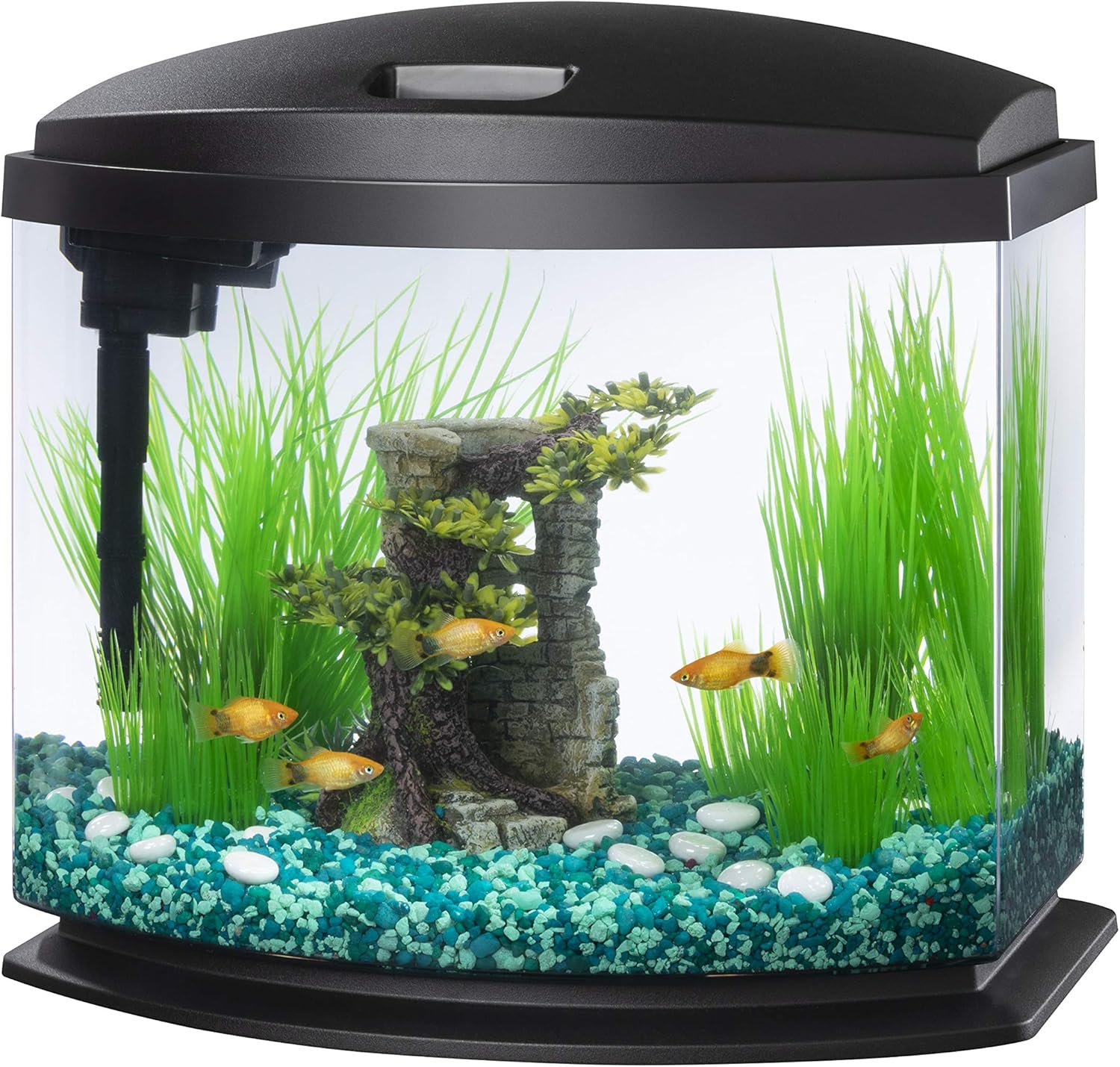
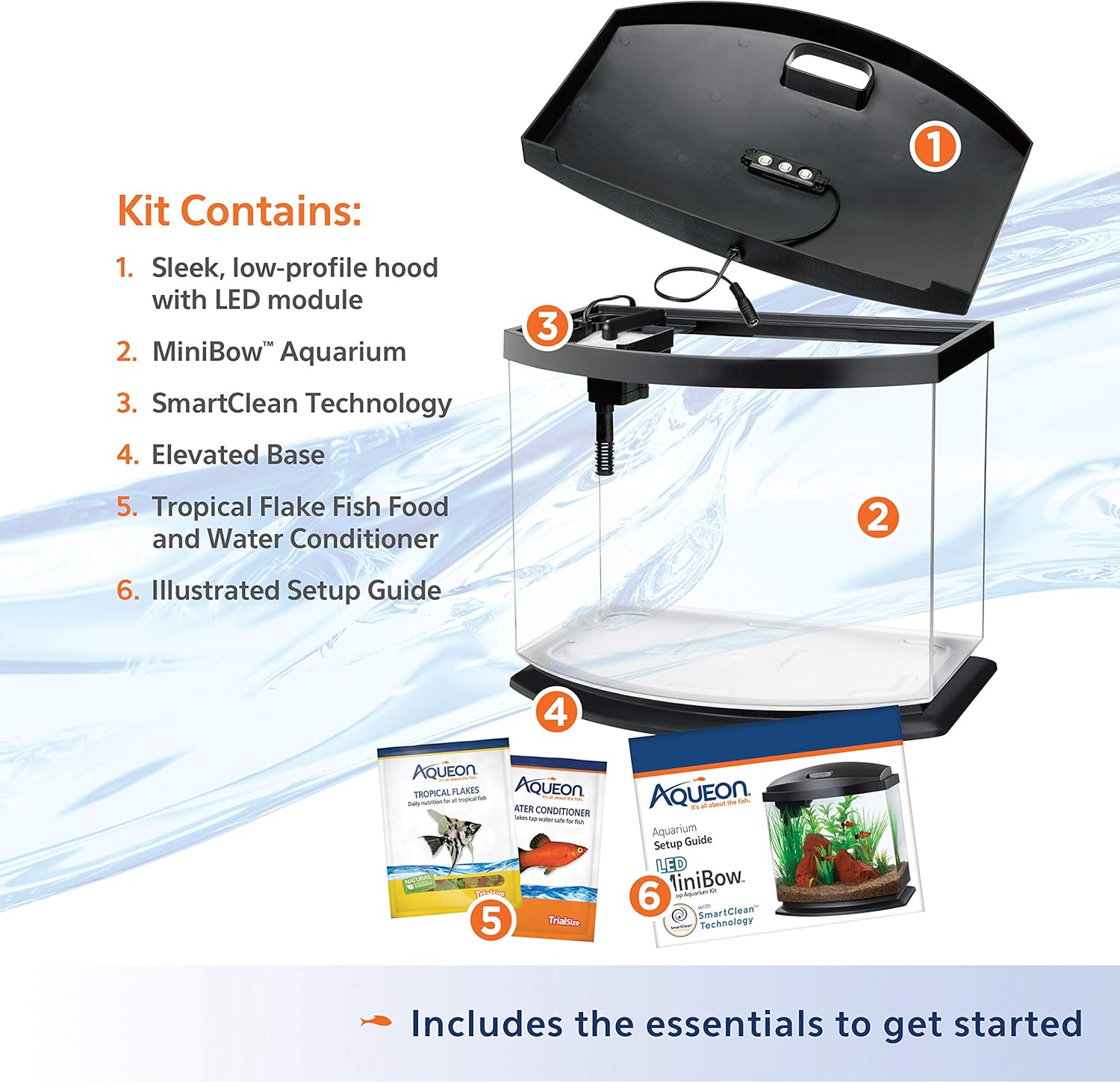

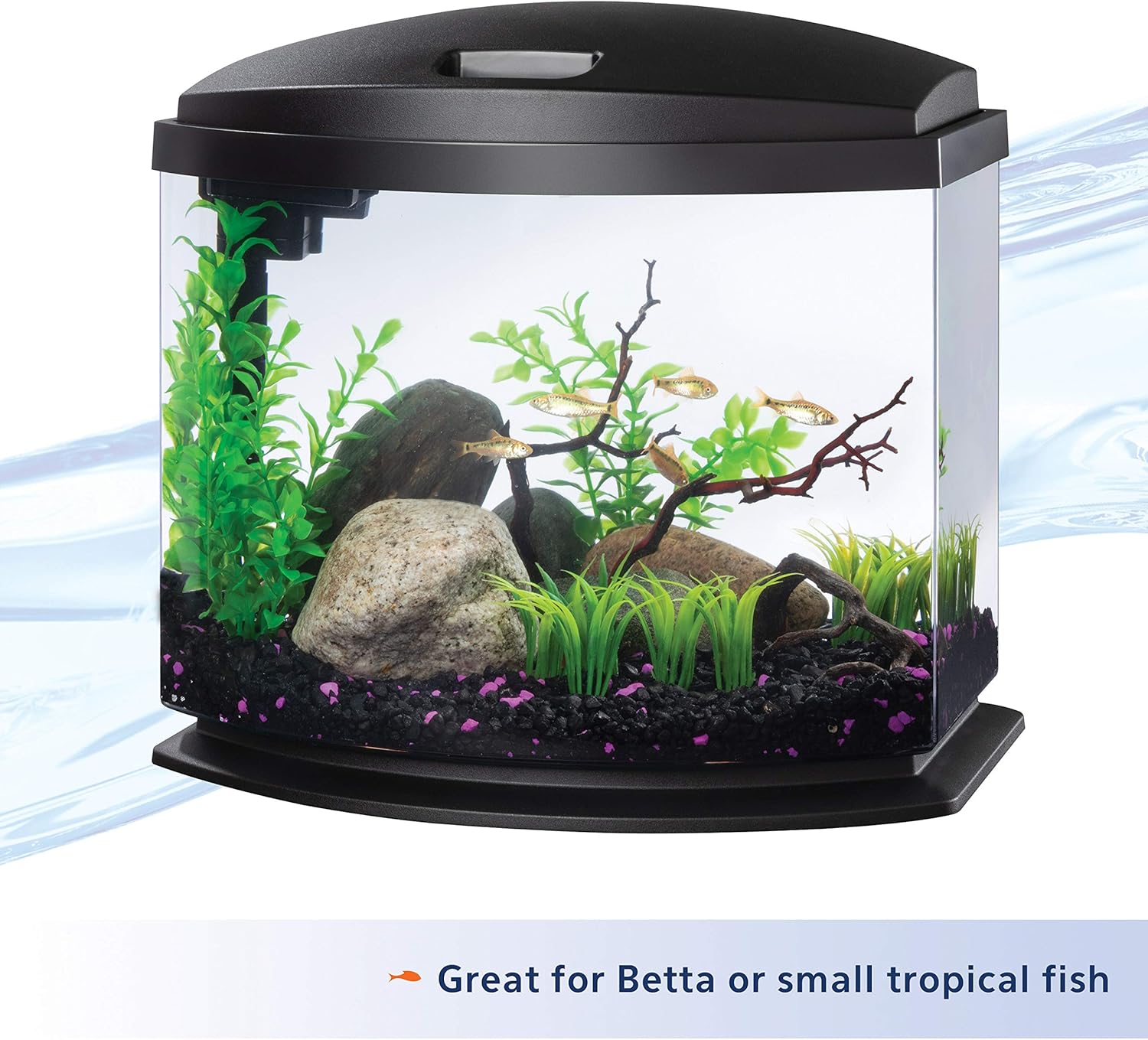
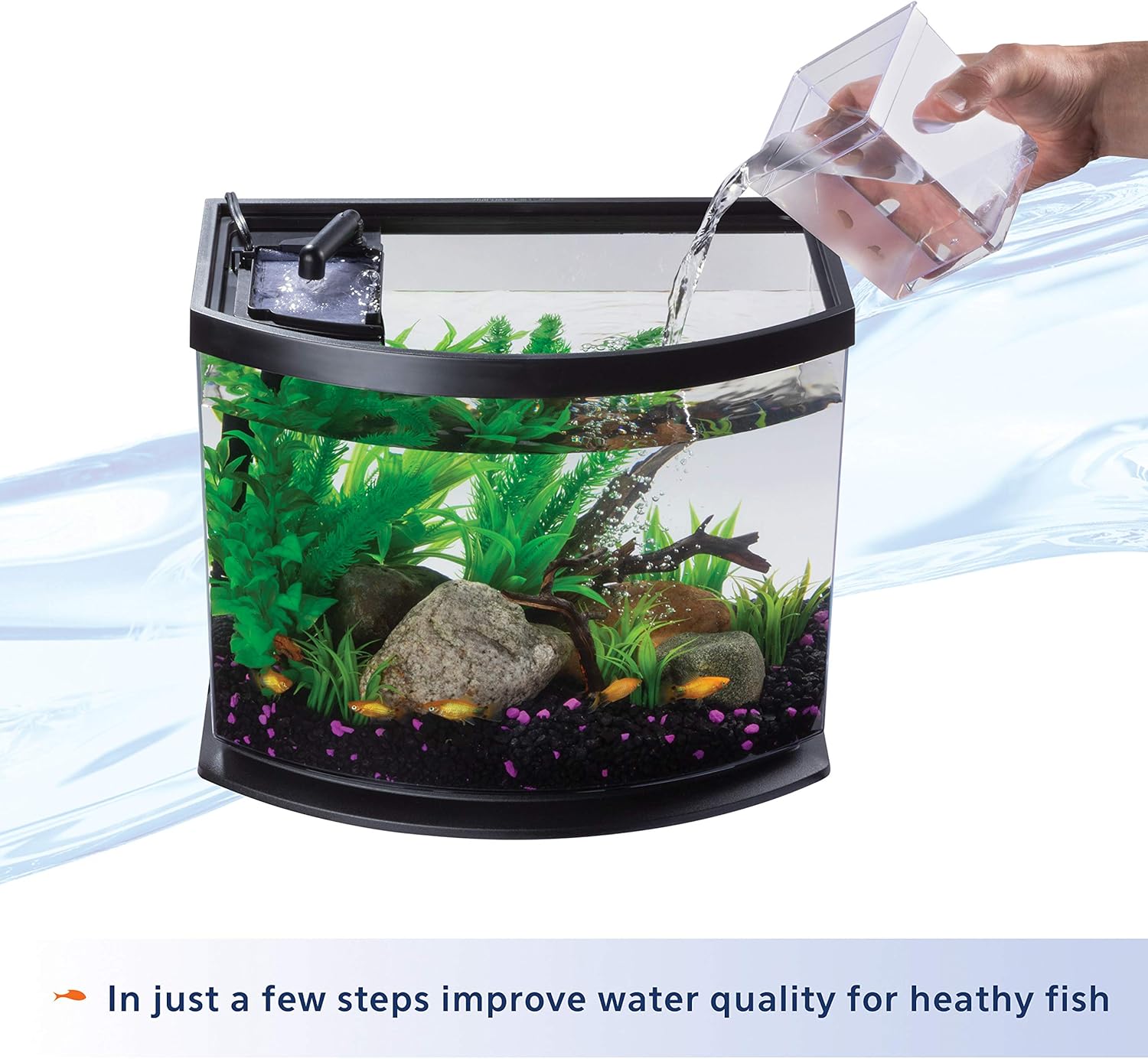
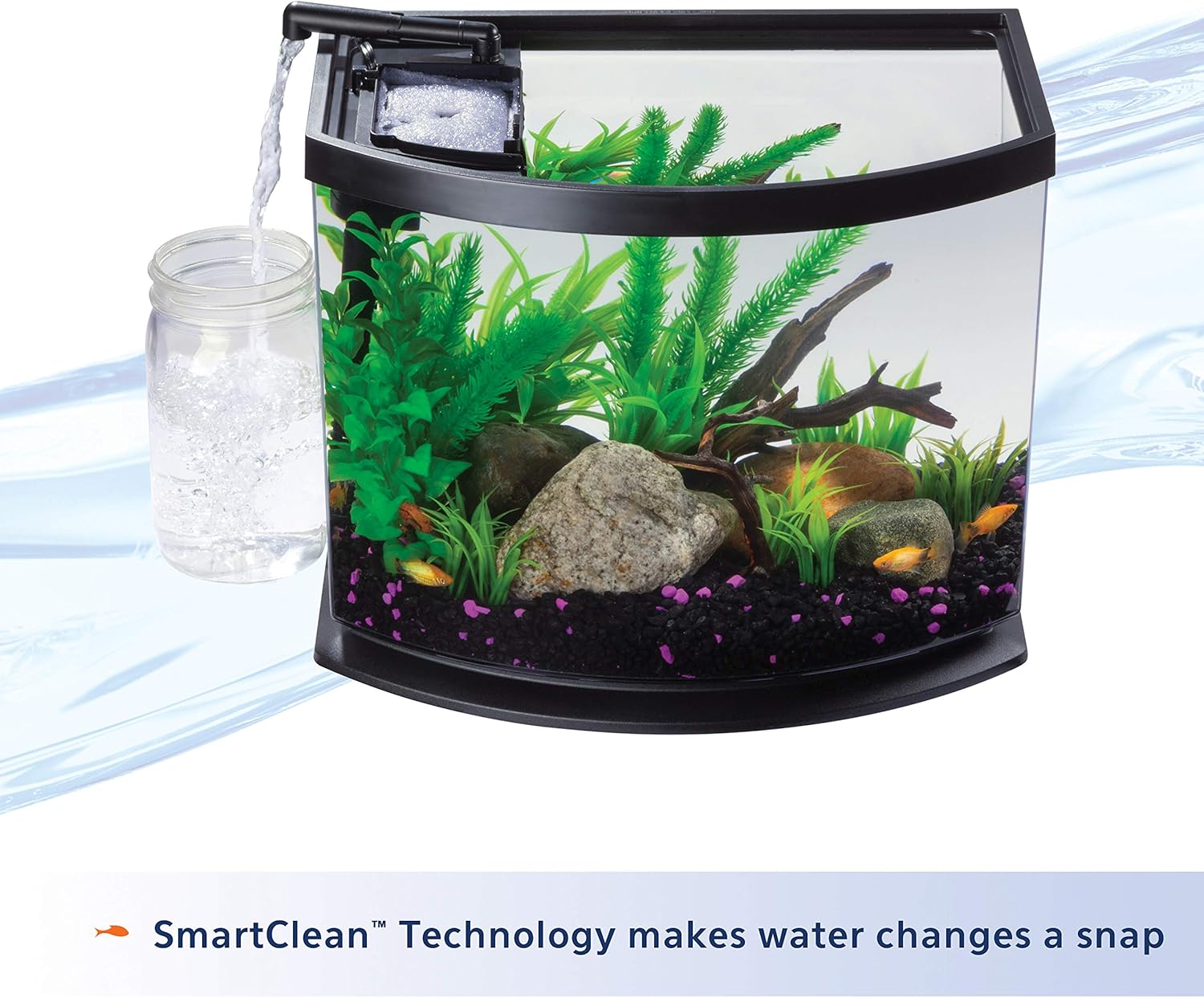
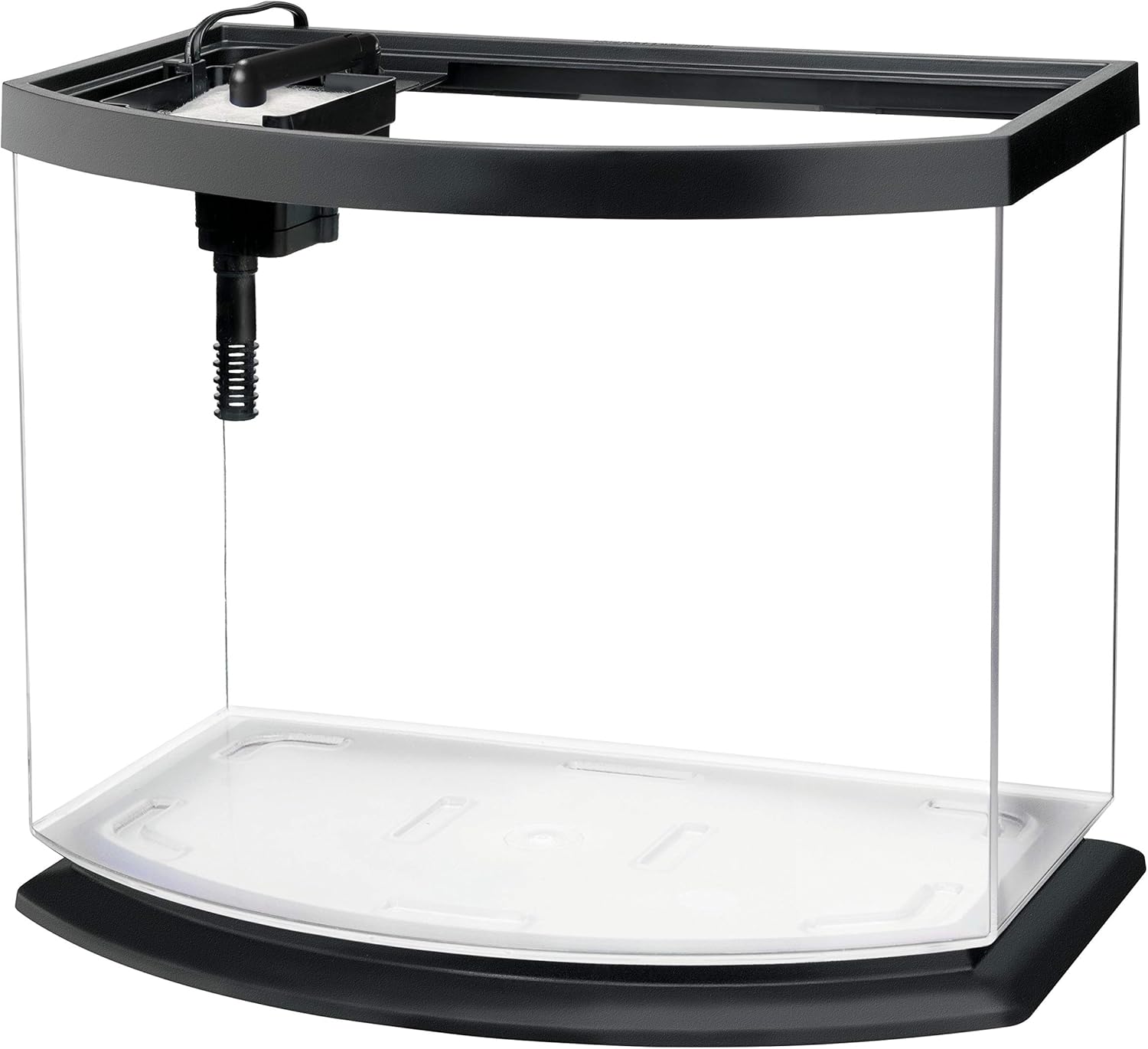

Price: $79.99 - $67.95
(as of Sep 04, 2025 07:28:46 UTC – Details)




